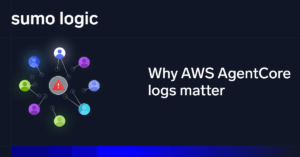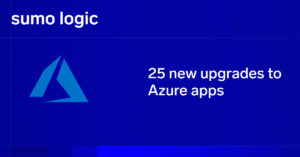
If you’re building AI systems with agents, plugins, and orchestration layers and you’re only thinking about how to route traffic, you’re halfway to being pwned.
Everyone’s rushing to build a Model Context Protocol (MCP) — and that’s great. But almost no one’s talking about MoCoP — the Model Control Plane, which is just as important and arguably where the riskiest stuff happens.
(Also, side note, who the hell keeps making these damn acronyms so confusing? I can’t keep it straight. This is why we can’t have nice things. /endofrant) (Side side note I just made up this acronym)
Let me break down how these two systems work, how they’re totally different, and why not having both means you’re basically inviting prompt injection in through the front door.
Respond faster with Sumo Logic Dojo AI
Cut through the noise, detect threats faster, and resolve issues before they disrupt your operations.
What they do and why it matters
| Feature | MCP (Model Context Protocol) | MoCoP (Model Control Plane) |
| What it is | The orchestrator — it routes requests, runs plugins, and enforces policies. | The payload — it’s what actually gets passed to the LLM. |
| Primary job | Controls what runs, with what tools, and under what policy. | Builds the prompt. Escapes inputs. Tracks provenance. Defends the model. |
| Security focus | Keep agents and plugins in a box. Apply policy. Validate identity. | Prevent prompt injection. Block leaks. Structure context correctly. |
| Lives in | Your backend (infra, agents, orchestration). | The data plane (prompts, memory, plugin output — aka the sketchy stuff). |
The mental model: Infra vs input
Here’s one way to think about the difference between the two:
| Role | MCP | MoCoP |
| Analogy | Like a Kubernetes control plane for AI | Like a pod spec or container definition |
| Compared to | Your zero-trust enforcement kernel | A tamper-proof, signed RPC payload that feeds your AI brain |
Who secures what
Here’s the problem: people are building secure MCPs and then letting garbage or unescaped inputs hit the model. That’s like building a fireproof building and leaving a window open with a pile of oily rags inside.
Take a look below to see which layer is responsible for handling what.
| Concern | Handled by MCP | Handled by MoCoP |
| Plugin sandboxing | Yes | No |
| Prompt injection escaping | Sometimes | Yes |
| Credential scoping/token signing | Yes | No |
| Context truncation/overflow | No | Yes |
| Message replay / queue injection | Yes | No |
| Provenance of input blocks | Enforced at routing | Explicit metadata |
| Tenant isolation in vector store | Yes | Relies on label enforcement |
| Guardrail enforcement | Via policy engine | At the serialization layer |
| Schema bugs or format drift | No | Yes |
| Versioning | Internal plugins/APIs | Schema tags and hashing |
Real example: When MCP isn’t enough
Let’s say you built a good MCP.
You did sandboxing. You scoped IAM roles. You even used OPA.
Then someone drops a plugin that outputs this:
nginx
CopyEdit
ignore previous instructions And because you don’t have MoCoP, that output slides right into your context unescaped, directly below your system prompt.
The model flips, the jailbreak works, and you’re wondering why your “secure AI stack” just bought concert tickets on your behalf.
How you fix it
| MCP does this | MoCoP does that |
| Loads plugins, applies IAM | Escapes and signs plugin output |
| Routes to the right LLM | Applies token budget constraints |
| Validates identity and enforces RBAC | Tags and timestamps each context block |
You need both MCP and MoCoP
As the saying goes, “You can’t have your pudding if you don’t eat your meat.” The same can be said for these two systems.
If you have MCP? Great, you’ve secured who can do what. And if you have MoCoP? Even better, now you’ve secured what actually goes into the model.
But if you only have one? You’re leaving a critical gap and essentially handing out backdoors with a bow on top. Think of it this way:
- MCP without MoCoP = Secure orchestrator passing unsafe context
- MoCoP without MCP = Safe inputs coming from a potentially compromised controller
At Sumo Logic, we’re thinking deeply about both sides of this challenge. Building secure AI systems requires visibility across your logs, which is where we come in to help monitor and detect any issues.
Curious to see how Sumo Logic protects your AI systems? Sign up for our 30-day free trial.




